Units: An Analysis of Pikmin 3
By gamer_152 1 Comments
Note: This article contains major spoilers for Pikmin 3 and moderate spoilers for Dead Space and Dead Space 2.
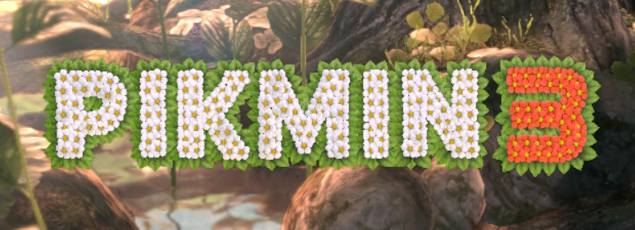
Pikmin 1 and 2 are widely considered banner releases for the Nintendo GameCube. That makes it confusing that there was no original Pikmin on Nintendo's follow-up console, the Wii. Shigeru Miyamoto had floated the news of Nintendo working on Pikmin 3 as early as 2008, but it was 2013 by the time it arrived. When it did, it touched down on the virgin surface of the Wii U. I know there are all sorts of complex development reasons that get releases delayed, but it's impossible to imagine a mainline Nintendo console that didn't get a Mario and Zelda, or a handheld that went sans Pokémon. If Nintendo has a profitable series it wants to see on a new platform, it brings the heat. So, we had to conclude that faltering revenues from the first two games were a factor in the lack of a Pikmin for the Wii.
Pikmin in the Charts
In July 2023, Miyamoto explained that the Pikmin franchise has never "exploded" as a money-maker. And 27 months after the release of Pikmin 2, Edge Magazine reported that the combined sales of it and its predecessor only added up to 1.1 million units. Those numbers pale in comparison to the 6.3 million copies of Super Mario Sunshine sold or the 4.6 million Wind Waker discs that found their way into hands worldwide. And for context, the industry considered Wind Waker to have underperformed.
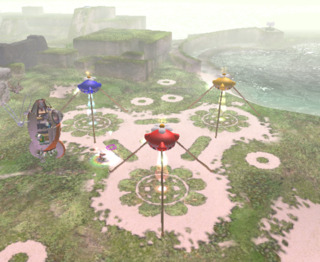
In the 2000s, Pikmin was a new franchise that had not yet made a name for itself. It also wasn't designed to woo fans of any other existing genre because, as we covered in the first article in this series, Pikmin is its own genre. It asked players to learn a foreign control scheme and apply it to high-difficulty problems while trying to freak them out with its creature designs. I suspect that it's only because of Nintendo's seal of quality that Pikmin didn't fade into history as one of those cult relics like Chulip or Seaman. A likely story emerges: the prickliness of Pikmin 1 and 2 hurt it in the quarterly reports, so Pikmin 3 was fitted with a softer tone. It consolidated the two GameCube titles before it but sweetened them for casual and family audiences: the audiences that the Wii and DS threw open the gates to.
Putting the assessment scheme from my last essay back on the whiteboard, there are three key decisions that the Pikmin games make that overwhelmingly define how they play:
- The number of protagonists.
- The items you collect.
- The pikmin you use to collect them.
In Pikmin 1, we were a single character adjuring red, yellow, and blue labourers to salvage spaceship parts. Pikmin 2 had us jack into two humanoids to hoard gleaming treasures, that time with white and purple pikmin in tow. Pikmin 3 is about three explorers using five subspecies of pikmin to pick fruits. Although, they're not the five you knew. We're going to break down what these three changes mean for Nintendo's superstar strategy game.
Autopilot
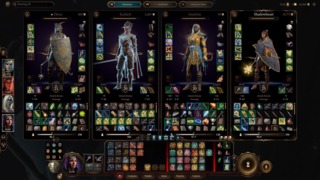
To dust off one of my old chestnuts, scaling up a system often entails not just adding more components but incorporating new features. In the case that a system allows users to manage some entities, when you increase the number and types of entities, you also need to provide features that empower the operator to better analyse and control them. If you went from asking your player to select between a few different items in their satchel to letting them choose from an inventory of a hundred, options to sort items by categories (like type and level) would be a good idea. If your adventure goes from taking place in a couple of rooms to a labyrinthine mansion, you need to provide players with a map. And so on.
In Pikmin 2, switching characters meant being able to switch control of groups of pikmin instantly, even if there was a whole level in between those parties. However, we could only pilot one pilot at a time, leaving the other idle. The game didn't allow us to tap the full potential of these characters, and that restriction felt unrealistic. Olimar and Louie are otherwise depicted as two individuals with their own agency, so why can't they behave that way during a mission? It's unusual in the context of a series about units that can act outside of your direct control.
Pikmin 3 has 50% more player characters in every bottle, so if it didn't have a method for you to utilise them in parallel, that would be a gross amount of wastage. You'll also notice that the more player characters you add to the game, the less map coverage each new character provides. If you have two avatars, you could split the map into halves, and each character could rule 50% of it, maximum. If you have three characters and they're all optimally spaced out, each only has jurisdiction over a third of the map. You didn't get that much more reach. One way to make those character additions feel more significant is to have the salvagers perform active functions when we're not controlling them. In Pikmin 3, those functions are enabled through the new autopilot.

At any point while playing, we can place a marker on the map, and our character will follow a path to it. The mechanic lets us skip over the errand of manually marching our Pikmin from A to B, leaving active play consisting only of the moments where we're problem-solving and extracting rewards. As technical as this navigational aid sounds on paper, in practice, it's the life of the party. You feel optimally productive when you can get your three astronauts working simultaneously like a well-oiled machine. And there are gleeful surprises where you're dismantling a blockage on a path or laying claim to a pellet only to unexpectedly be told that a transport task completed in the background. Pikmin 3 is idler-adjacent.
As we have more explorers trotting about without supervision, the game has to reduce the number and potency of enemies on the map. You can see why it would have been difficult for Nintendo to implement an autopilot back in 2004 while keeping the series combat-focused. Pikmin 3 is a game of autonomous movement, reduced threat density, and an overhauled battle system. In comparison to its predecessors, it spends more time testing us with scheduling exercises and less time having us fight beasties.
Lock-On
I should elaborate on those changes to the battle system. There are two big ones:
- You can no longer have pikmin march around you independent of your movement.
- The free-aiming cursor for throwing pikmin moves too quickly to be precise, but can now lock on.
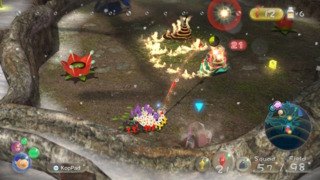
These handicaps boil away almost every dreg of hand-eye coordination challenge. It might sound like Nintendo dropped the ball here, but I do have some sympathy for their position. Fitting a control scheme to Pikmin 3 sounds simple enough. You need to move your astronauts and throw units in different directions, so why not use the twin-stick shooter template? The left stick would position you, and the right stick would aim your troops. But a complication arises because twin-stick shooters only need you to express the direction in which a bullet should move, whereas, in Pikmin, you also have to mark the distance you want your living bullets to travel.
Pikmin are not meant to fly continuously in one direction when thrown; you are aiming for them to fall near or on top of terrain, an object, or an animal. It takes patience and practice to move your avatar while keeping the pinpoint reticle exactly where you need it. Add the game's trust that you can control the camera and orient your Pikmin while aiming, and you've got a lot to wrap your head around. While Pikmin 1 and 2 got away with forcing the player to manage the coordinates of all these entities at once, you also have to remember it was the early 00s. Releasing in October 2001, Pikmin predated Halo: Combat Evolved, which wrote the book on how a 3D shooter should assign movement and aiming to the controller. But Pikmin 3 arrived in 2013 and with a more pronounced concern for the casual player.
Unfortunately, the lock-on can hinder both the Pikmin tourist and the long-term resident because it's excessively magnetic. I'll press ZR, expecting the cursor to snap to a Bulborb over here, and it'll go and affix itself to a Pellet Posy over there. The Bulborb that thinks it just spotted dinner is still lumbering towards me as I fumble with the stick and shoulder button. The drawback isn't just the imprecision. A shotgun with a wide spread would be imprecise, but you could still probably tell from the reticle the range within which it could fire. But who can tell where the invisible bounds of the Pikmin 3 lock-on begin and end?
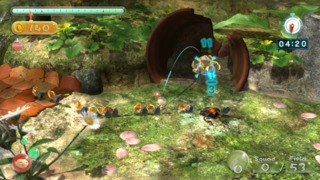
I'm giving the game a bit of a hard time. Pikmin 3 has to maintain an extreme distance between camera and characters for it to establish its scale model appearance. Its zoomed-outness also gives us ample information about nearby treasures and threats. That cinematography will impede the casual player's cursor control, whether the designer has the pointer move quickly or slowly. Have it move fast, and the typical player will find it blows past the objects and organisms they try to target; have it move slow, and now it takes ages to cover the length of the screen. Pikmin 3's compromise is a cursor that's a little too slippery to move onto a bug's head in the blink of an eye but that you can get 80% of the way there with an auto-aim that picks up the last 20% for you.
Difficulty
Really, the lock-on doesn't need to alienate hunter-gatherers who've been with the series since 2001. A lot of the arguments we have about where a game should pitch its difficulty are pure sophistry. Designers have known for a long time that people with different skill levels and seeking different levels of challenge are going to be playing the same game. It's why they invented difficulty settings. Granted, having a game fully accommodate a range of players requires more than just turning the AI intelligence or damage numbers up or down, but indulging a diverse player base is possible.
Sadly, Pikmin 3 has no option to disable the lock-on, and even if it did, the whole game is designed around a cursor that moves at Mach 10. There is also no setting that alters the behaviour of the fauna. You need your pikmin to clamp onto hostile wildlife to hurt them. Much of the challenge of previous Pikmins was in knowing when to call back your eco-warriors so they wouldn't get thrown off an enemy and swallowed up; you couldn't get greedy. But with longer windows for attack, Pikmin 3 doesn't have you bringing as much of your attention to the combat. The original version of 3 also lacks difficulty settings. Difficulties were introduced in Pikmin 3 Deluxe, but even in Deluxe, the difficulty knob only increases or decreases enemy health. It doesn't change predators' aggressiveness or intelligence, with the design often confusing making the game more time-consuming for making it tougher.
Fruit
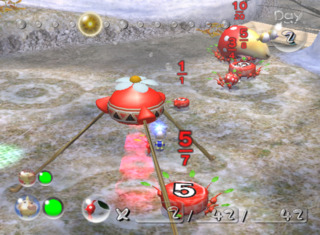
If Pikmin 3 had a constrictive time limit, long battles could cost you, and the game almost has a pressurising limit. Pikmin 1's thirty-day deadline was a double-edged sword. You felt accomplished when you used your limited time on the planet wisely, and the cap added real stakes to every conquest. It also made it so that you could enter your final week on the planet only to find that your playthrough was on a hiding to nowhere and had to be scrapped. Pikmin 2 did away with that problem by removing the time limit, but it also meant that the overworld lacked the tension of the original game's. Sure, you could lose pikmin, but infinite time to grow replacements extended you an effectively infinite workforce.
The third entry in the series vies for a middle ground between the intensity of Pikmin 1 and the reasonableness of Pikmin 2. Where we collect parts in the first game and pilfer treasure in the second, in the third, we forage for fruit, and fruit is expendable. The home planet of the Pikmin 3 astronauts, Koppai, is starving, so they visit Earth to restock their larder. When you deliver fruit to their spaceship, the S.S. Drake, it is broken down into juice, with some foods producing more liquid than others. How fortunate the game's ending is for the people of Koppai depends on how many fruits you collect. The point is not just that more juice means less chance of starvation on Koppai. By collecting the bounty, the explorers also learn organisational strategies that they can use to manage Koppai's economy. But the juice is not a one-trick pony. In addition to being the pass to better endings, it is also your lifeline. You arrive on the planet with 7 bottles, and your foragers drink a little each day. If you run out of sustenance, it's game over.
In concept, the system is smart: You start with a little juice in your cup, and it drains every day. As long as the amount of juice you produce matches the amount your crew drink, you're perpetually dangling above the piranha pit of failure, indefinitely a few drinks from them keeling over. Quantitively, the system is too lenient. Even playing on the Hard difficulty, it's easy to blend more juice than you consume. In the original Pikmin 3, which conforms roughly or exactly (it's hard to tell) to the Hard mode of 3 Deluxe, there is enough total juice on the planet to survive almost 100 days. So, you can build up a buffer of rations so ample that you won't get within an astronomical unit of starving; all the weight is taken off your chest. The Ultra-Spicy difficulty has you guzzling double the drink per day, but that's still about fifty days of food, and a new save system makes it easy to roll back to any previous checkpoint. You can also only unlock Ultra-Spicy after you beat the game on Hard, by which point you've already gotten a lot of practice at the fighting and foraging, and know the location of every kiwi and mango.
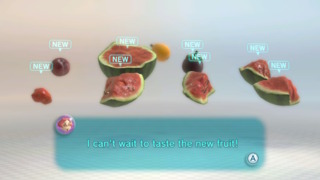
It would be one thing if Pikmin 3 was trading cutthroat combat for brutal survival, but players of the first two games are unlikely to find the game taxing in either area. This is fine for the Easy and Normal settings, but it means that the Hard and Ultra-Spicy modes are not catering to their prospective audiences. Systemically, it feels like most of the life in Pikmin 3 is secluded outside the main campaign. The bonus side missions add back that special sauce: the time limit. They can do this without making you suffer long-term for mistakes because that time limit only applies to the next ~ten minutes of play. If you fail out, a doover is just around the corner. The challenge missions make up for a deficiency of pushback elsewhere in the game. However, as you're just competing for a rank in them and no merits in these side-tasks affect the main game, they are not a replacement for a single-player that would reward maximum resourcefulness and coordination.
Creature Design
Depending on when you jumped into the series, your mileage with the enemy design of Pikmin 3 may vary. Like in the Pikmin of the past, some of 3's creepy crawlies look like the last thing you'd want to find at the bottom of your garden. The Pyroclasmic Slooch with its sliding bands of orange and the Quaggled Mireclops with its Pale Man eyes represent new directions for the series while remaining curiously unsettling. Yet, for the first time, some animals are a little more pop-up book, like the Vehemoth Phasbat with its Gruffalo expressions or the Scornet Maestro, which I could almost imagine in Cuphead. It's not a "bad aesthetic"; it's just not Pikmin to me. But it is worth sticking with 3 until the end because its concluding sequence is a feast of horror.
In the final area, The Formidable Oak, we rescue Captain Olimar, who has been kidnapped by a gelatinous shapeshifter called the Plasm Wraith. Every time the Captain tries to escape, this slimeball sedates him and drags him back to the top of the tree. At first, the Wraith, like the Ubermorph from Dead Space, cannot be defeated; only slowed. To do battle with it, we have to heave Olimar away from it, tearing down gates and building bridges until we reach the base of the oak, but the blob is chasing us every step of the way. For most players, confronting the boss is a matter of replaying this section more than once, cutting new shortcuts into the bark on each run before being dragged back to the start by the Plasm, living a miniaturisation of the repetition that had become Olimar's life. The ludonarrative of the area follows from the design of the Plasm Wraith, and the design of the Plasm Wraith is surreal.

Last but not least, let's talk about the pikmin themselves. Outside of the challenge stages, purple and white pikmin have been excommunicated. The two variants Nintendo subbed in, flying and rock pikmin, are fine, but they're no purple or white. As I said last time, the danger in designing fresh pikmin is that every time, you imagine a new hazard and then come up with a colour that overcomes that hazard, so the design becomes cookie-cutter: the red pikmin are fire-proof, the yellow pikmin are shock-proof, and so on. Pikmin 2 added purple, a colour that doesn't resist any one hazard, and so avoids that lackadaisical colour matching, but both of Pikmin 3's new subspecies are assigned a new interactible each. There are stalks in the ground that only flying pikmin can uproot and crystals that only rock pikmin can smash.
The flying and rock subspecies have auxiliary powers, but they don't expand the interactive possibilities to the extent purple and white did. Flying pikmin are pushovers in a fight but can haul items through the air. That makes them uncannily similar to the blue, which are weak in combat but can carry items through water. Rock pikmin can incur extra damage when thrown onto enemies, but it's a pretty blunt ability that also overlaps with red's prodigious attack stat. There's a lot of the colours stepping on each others' toes. And where purple pikmin were perfect for carrying any item, flying only improve on the other characters at reeling in this one type of plant.
Ending
Pikmin 3 goes down too smoothly to feel like you are fending for your life in an alien expanse. It also does not reach the heights of character design we saw in 1 and 2, and flounders in executing its concept for an extendable time limit. But Pikmin also conforms to the pizza rule; even when it's bad Pikmin, it's still pretty good. And while I'd have loved to play a more direct inheritor of the first two games' philosophies, deep down, I know we series veterans got two excellent strategy titles out of this series. It's fair that the general public received a Pikmin made first and foremost for them, and on that mission, Nintendo returned home a hero. Thanks for reading.